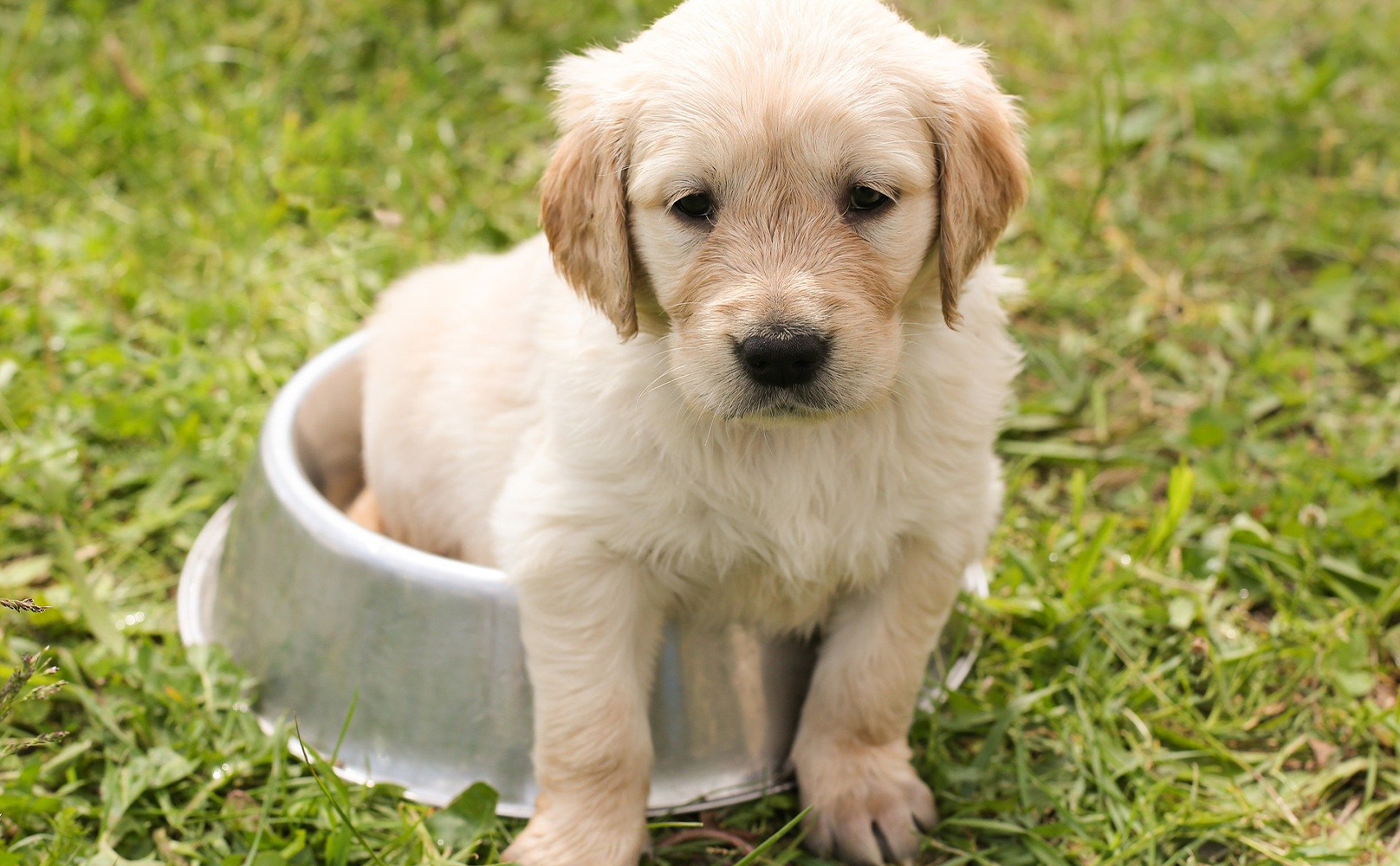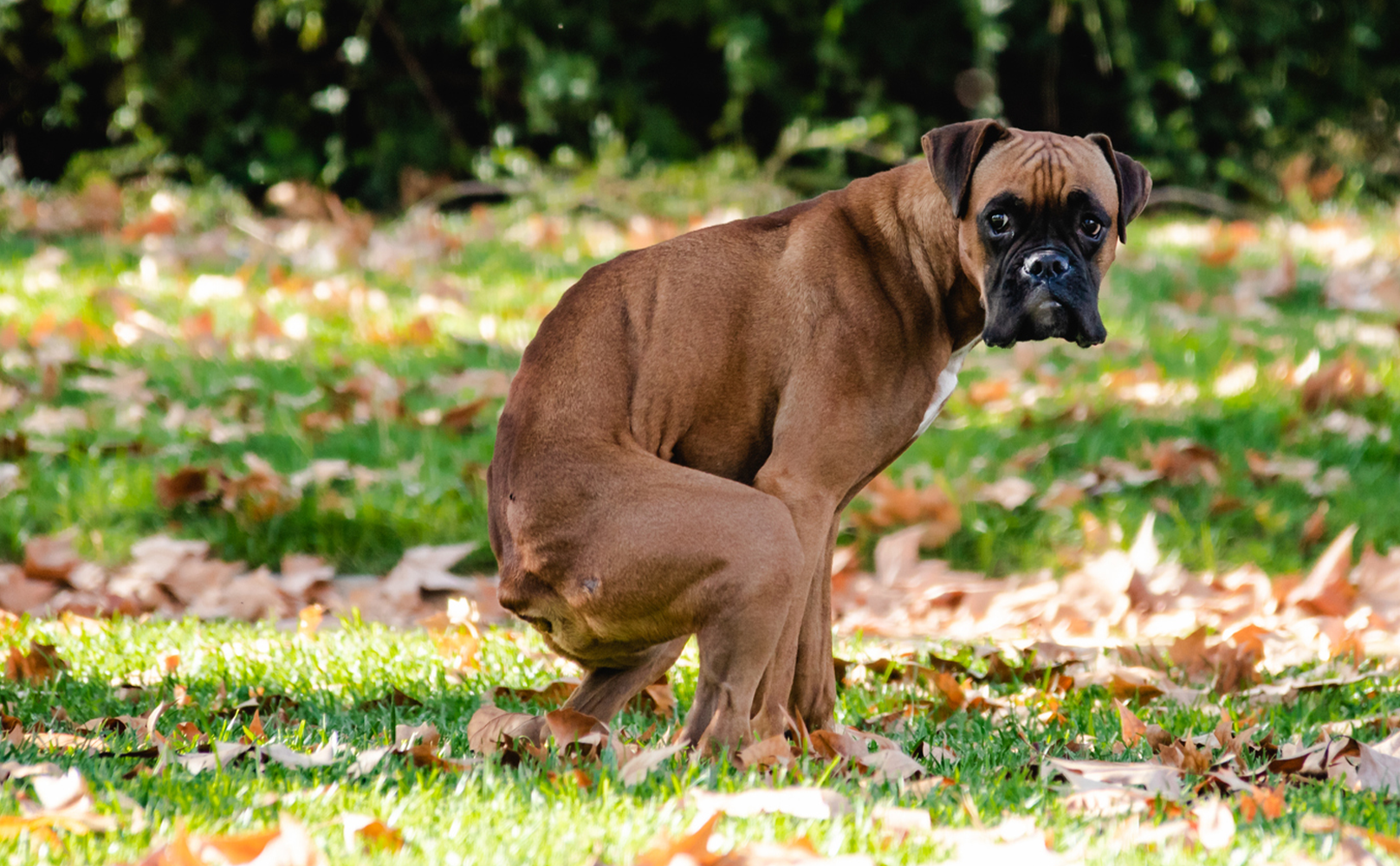For Pups With Short Attention Spans…
Puppy food is tailored to the needs of a growing young dog, so it is typically more nutrient and calorie dense to promote healthy muscular and skeletal development, and match their higher energy requirements. Puppies typically stay on puppy food until they are around 80% done growing, which for small dogs is around 10-12 months, and for larger dogs between 12-18 months.
If you’ve just brought home your first puppy (first of all, give them a head scratchy for us!) or you’re beginning to noodle around with the idea of getting a puppy, you might be wondering why they need food specifically made for them.
You might also be wondering whether or not you can just skip straight to the adult dog food, but puppy food is a must! We’ll notice if you’re trying to disguise your puppy as an adult dog in a trench coat to skip this step—we watch for those things!
Bringing a new puppy into the household comes with a lot of uncharted territory, whether it’s your first puppy or your fifty-first. (If you have 51 puppies, you probably have bigger problems on your hands, though, like where to find an entire army of Roombas for all the dog hair.) Each individual puppy and breed has their own quirks, traits, and personalities, but we’re here to at least take the guess work out of one thing—puppy food.


Is Puppy Food Really Any Different Than Adult Dog Food?
One big difference between puppies and adult dogs is that, while adult dogs eat to maintain body functions, puppies eat to grow. Every part of their body, including their skeletons, grows rapidly in the first year of life (or two if they’re big!).
For this reason, puppies have more specific nutrient requirements than adult dogs do. Although adult dog food won’t harm your puppy in the short term if they sneak in a chomp or two, it could cause health issues down the road because it just isn’t made to puppy specs. Remember, puppies need the right balance of nutrients in their diet. Too much can be as bad as too little! Puppy food is formulated to include the extra nutrients the li’l whipper snappers need for their quickly-growing bodies, such as:


Protein
Puppies have a higher protein requirement (per pound of bodyweight) than adult dogs do. It’s also very important that the protein is highly digestible and of good quality. Protein deficiencies can lead to reduction in growth, weight loss, issues with brain development, and a less effective immune system.
Vitamins & Minerals
It’s always important for all dogs to have a diet balanced in vitamins and minerals. In growing puppies, this balance needs to be even more precise, since imbalances can cause permanent abnormalities in their growing bodies.
For example, the calcium/phosphorous ratio is important to get right (not too much, not too little) as puppies grow. This allows their skeletons to develop properly. Large breed puppies have a narrower acceptable calcium/phosphorous range than smaller puppies, which is why it’s important to make sure that they eat a diet intended for their size class.
Fat
Fat carries energy, essential and non-essential fatty acids, and fat-soluble vitamins. In puppies, the metabolism isn’t as efficient at making some of these fatty acids, so their inclusion in the diet is really important for good development of the nervous system, retina, auditory systems, and more!
DHA, an Omega-3 fatty acid, is one example. Studies have noted improved memory in puppies whose food contains DHA, as well as those who were weaned from mothers eating a diet rich in DHA. May we suggest the name Einstein for your new genius pup?
Calories
Most puppy diets will be more calorie-dense (meaning more calories per cup of food) than adult diets. This is because puppies need a lot more calories per pound than adults do, and their tummies are only so big! The flip side of this is, of course, that you also have to be careful not to overfeed your puppy to the point where their growing skeletons feel the strain of excess weight. Your vet can help you keep track of this at your puppy checkup appointments.


What To Look For On Puppy Food Labels
The first two things to keep an eye out for are whether the packaging states that the diet meets the AAFCO dog food nutrition guidelines (if you’re in the United States) and whether the food is labeled for puppies or “all life stages.”
AAFCO Dog Food Guidelines
AAFCO (The Association of American Feed Control Officials) sets the standards for proper nutritional values that puppy foods must abide by. Each diet should contain a statement regarding how the food meets AAFCO standards.
Puppy Food vs “All Life Stages” Food vs “Maintenance” (Adult Food)
You may see food labeled for “all life stages” and others for “puppy growth.” Don’t worry, as long as the diet is formulated according to AAFCO standards, both meet the needs of a growing puppy. In fact, all puppy food can also be healthily and safely fed to adult dogs to meet their nutrition needs. Just keep in mind that with more calories per cup, puppy foods may lead an adult to pack on some extra pounds if you’re not careful.
If a label says a food is for “maintenance” or “adult maintenance,” it has not been formulated to satisfy the nutritional needs of growing puppies.


Large Breed Puppies
Finally, remember that large breed puppies have extra-specific requirements compared to other puppies, so you want to look for a label that meets that requirement as well.
“Formulated” vs “Feeding Trials”
The food label will also have to specify whether the diet was validated using a feeding trial (in which puppies are fed the diet for a period of time, and their growth and blood values are monitored to make sure they develop as expected) or by formulation (meaning that the nutrient profile of the food was compared against what AAFCO requires).
Check out the AAFCO label for BARK Puppy Food as an example:
“Bark® Puppy Chicken & Rice Dog Food is formulated to meet the nutritional levels established by the AAFCO Dog Food Nutrient Profiles for all life stages including growth of large size dogs (70 lb. or more as an adult).”


How Long Should Puppies Be On Puppy Food?
Puppies can start with solid food at about 4 weeks old, when their tiny chompers are starting to come in. This is when they’ll begin needing more calories than their mom’s milk alone can provide. Pups younger than 8 weeks old may need a bit of extra help with the crunchy kibble, so try moistening it by adding some water if you have a very young puppy (ideally puppies don’t leave mama until they are at least 8 weeks old).
You can begin transitioning puppies to adult food when they’ve completed about 80% of their skeletal development. For small breeds this is usually somewhere around 10–12 months old, and 12–18 months for medium and larger breeds. Your veterinarian will be the best one to help you confirm your puppy is ready for adult food.


How Much Food Do Puppies Need?
Look at the label on your puppy food to determine how much food to feed them depending on age, weight, and activity level. Note: these charts are merely recommendations—every dog is different! Here are some signs to look out for that indicate your puppy is doing well with their current food volume:
- Bunches of energy
- Gaining weight to keep up with their growing frame, without being overweight (make sure to poke a little fun at them when they’re in the gangly leg stage)
- Satisfied after a meal
- Shiny, thick coat
- Solid, brown poops
It’s best to feed puppies 3–4 times per day for their first 4–6 months after weaning, and 2–3 times per day after 6 months. Take care to keep them at a healthy, lean weight.


Do Puppies Need Special Treats?
Puppies are special and do deserve treats, but there are a few important guidelines to keep in mind. First, most of their calories should come from their complete, balanced kibble diet. Treats are not nutritionally balanced, so a lot of them can actually alter the nutritional balance in your puppy’s body.
Make sure that treats make up no more than 5-10% of their daily calorie intake (at most!). Second, puppy teeth and brand new adult teeth are quite fragile, so you’ll want to keep away from hard, big, crunchy treats or chews. Stick to softer, easy-to-chew treats.
Finally, puppy digestive systems are generally more sensitive than adults’. When you shake things up with treats, you also risk shaking up the poop harmony of your puppy’s GI tract! For this reason, we’d like to point out that puppy kibble makes a wonderful treat, especially if you act like it’s the best thing ever (puppies totally believe it if you do!).


Things You Should Never Feed Your Puppy (Or Adult Dog)
Most people already know that chocolate is a no-no for dogs, but here’s a list of other harmful foods:
- Grapes (raisins)
- Onions
- Macadamia nuts
- Xylitol (often found in peanut butter and gum)
- Raw bread dough (or any raw yeasted dough)
- Garlic
- Chives
- Alcohol
- Fruit pits
- Corn itself is safe, but no corn cobs!
- Raw meat
- Raw egg whites
- Keep dirty cooking utensils out of reach—that grill brush is pretty tempting after a barbecue, and the steak knife used for dinner can (and has) slid right down the gullet of at least a few hungry pups!
Margo Hennet, DVM, cVMA, and veterinarian at BARK is a canine nutrition, health, & wellness connoisseur. She has a combined 10 years of experience in clinical medicine, research, and education—that’s 70 dog years of know-how—and graduated from Colorado State University as a Doctor of Veterinary Medicine. She completed specialized training in internal medicine prior to working as a general practitioner in Colorado, has authored peer-reviewed publications and textbook chapters, holds certification in veterinary medical acupuncture, and is a member of the American Academy of Veterinary Nutrition and American Veterinary Medical Association.








